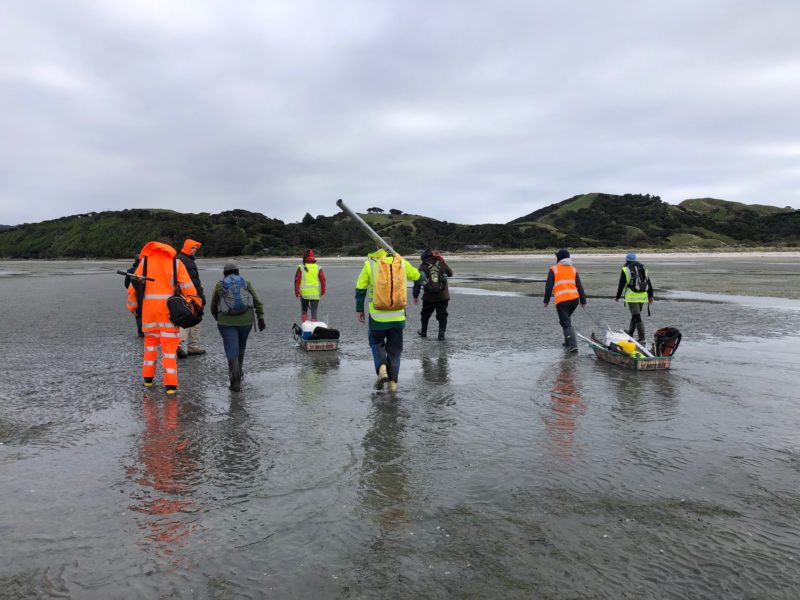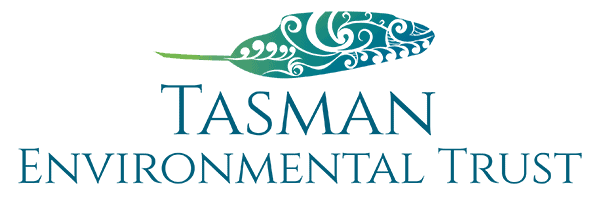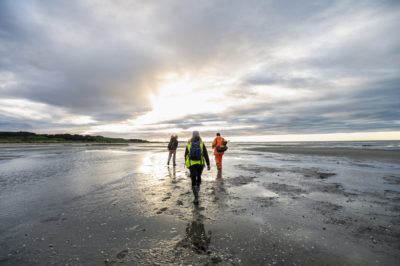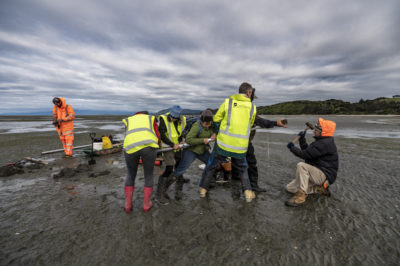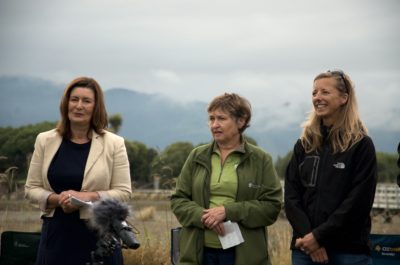A Core & Restore dawn gathering at Onetahua/Farewell Spit opened the door to deeper connections.
Lauren Walker believes in the power of connection and communication. A born networker, she was already working hard to build relationships with stakeholder groups on TET’s blue carbon Core & Restore project long before she officially took on the role of project lead.
The pilot project launched in November 2021, with core samples taken from the Waimeha/Waimea Estuary. But there was a second stage to the pilot: to take samples and measure how much blue carbon is stored in the seagrass habitat at Onetahua/Farewell Spit.
This took place on a magical morning in May 2022. A rare kind of warmth characterised the event, already in evidence the night before …
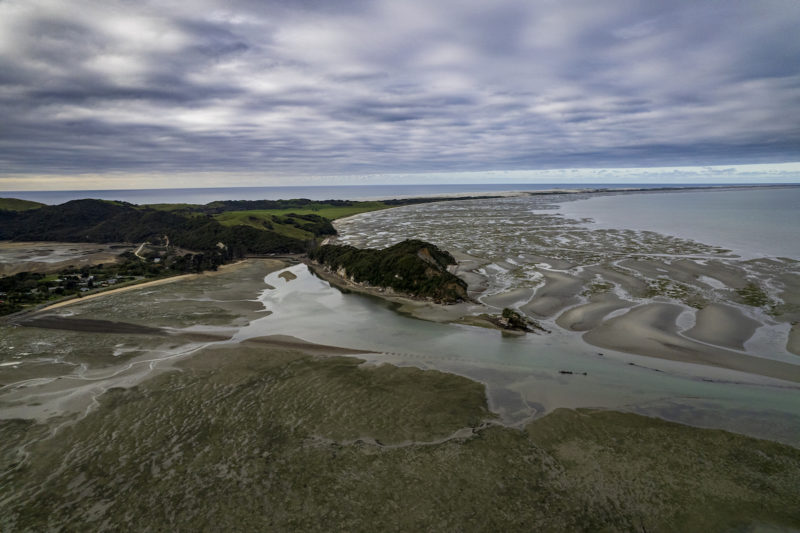
Special welcome to Mohua/Golden Bay
It began with a welcome. TET chair Gillian Bishop and partner respresentatives from Cawthron Institute, Beca, Ngāti Apa ki te Rā To and HealthPost Nature Trust were formally welcomed to Mohua/Golden Bay with a powhiri conducted by Manawhenua ki Mohua at Onetahua Marae.
“We had the chance to meet the whānau over there and they put on a beautiful kai for us after the powhiri,” says Lauren. “We [were able] to talk directly to the whānau about the project, they could ask us questions about it and start a dialogue so they could have a better understanding of what it’s about.
“Manawhenua ki Mohua explained to us why that area is culturally significant for them, and how the environment and the cultural significance kind of intertwine.”
“That, to me, was a really important gift. I feel like it was the start of the first step in a relationship of working out the possibilities around this together.”
Lauren Walker
Discovering a family connection
The group was joined by DoC’s Helen Kettles and videographer Andy McDonald for dinner at the Mussel Inn before driving in convoy to Te Whare Whakatā, HealthPost Nature Trust’s field station at Onetahua. The Trust had offered the whare as accommodation for the team to make use of while they were there.
It was at the whare that Lauren discovered a special connection.
“You go over Freeman’s access to get to that whare, and it used to be called Freeman’s Cottage,” she says. “My great-grandmother was a Freeman. I have a direct family link to that whare—which was pretty off the Richter!”
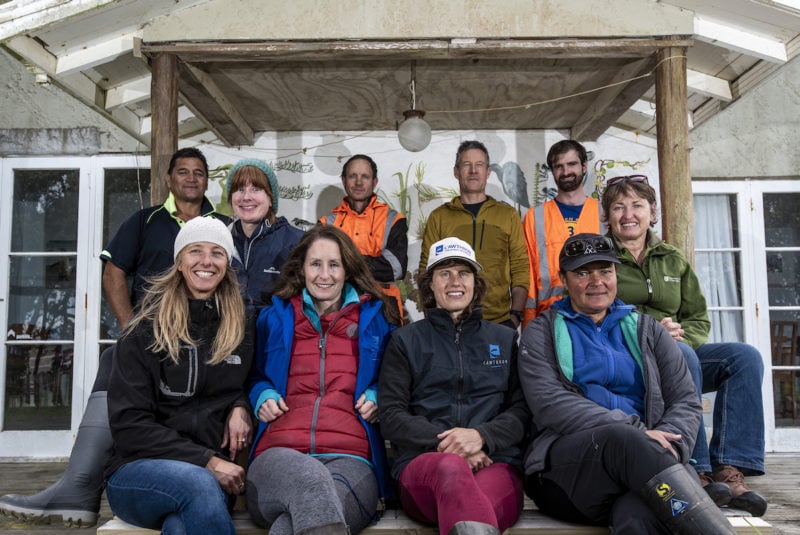
Karakia at dawn
At seven o’clock the next morning, the team greeted Makere Chapman, Raelene Mason and Syd Eru from Manawhenua ki Mohua.
“Makere said to me at the beginning of our conversations with MKM that she would be like the kuia for our project at Onetahua,” says Lauren. “She came over to offer the karakia before we started. Raelene and Syd came over to do the cultural monitoring, be part of the field team and see what it was all about.
“We were standing on the shoreline on the land side. Just as Makere started doing the karakia to welcome the sun, it just burst out from behind the cloud over the Spit. And it was like, Whoa! Amazing!”
“It was really just an amazing goosebumpy moment.”
Lauren Walker
Makere offered another karakia and the team got to work, looking for three different sites for taking core samples.
“Our goal was to sample the richest, yummiest seagrass we could find,” says Lauren. “And then two different density levels—50%–75% coverage and 25%–50% coverage. We wanted to find out if the carbon storage is different if the density is different.”
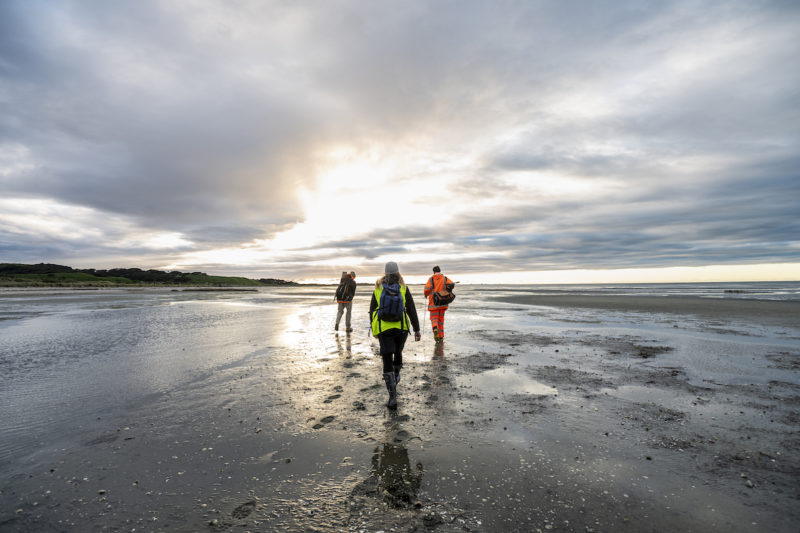
Taking the core samples
The group split into a Cawthron team and a Beca team, working on sites close to each other.
“We were aiming to get down half a metre with our cores into to the firm sand, and the first couple of attempts were a complete flop!” says Lauren. “But I was just astounded by the scientists and engineers—this is the kind of thing they deal with every day. They’re super practical. They talked among themselves and refined the method. And before we knew it, we had our first set of perfect cores, one from each team. They came out completely intact.
“Then we refined the method as we went, and collected the 12 core samples that we were after. And the people that weren’t from Beca or Cawthron wove themselves into the team and helped out.”
According to Lauren, the process took around four hours—less than the six they’d budgeted for. The cores were divided into sub-samples from different depths, with each sub-sample put into a separate container before being labelled and sent to a NIWA lab in Hamilton for analysis.
The results would then be sent to Cawthron for interpretation and a final result—with just one thing left to do before the Onetahua pilot was complete.
“Manawhenua ki Mohua are really keen for us to return the sediment from the sub-samples because it’s actually a wahi tapu (sacred) site where we sampled,” says Lauren. “That’s why cultural monitoring was so important.”
The Onetahua results will be incorporated into the results from the earlier phase of the project and combined into a package that explains them in plain language and puts them into a wider context.
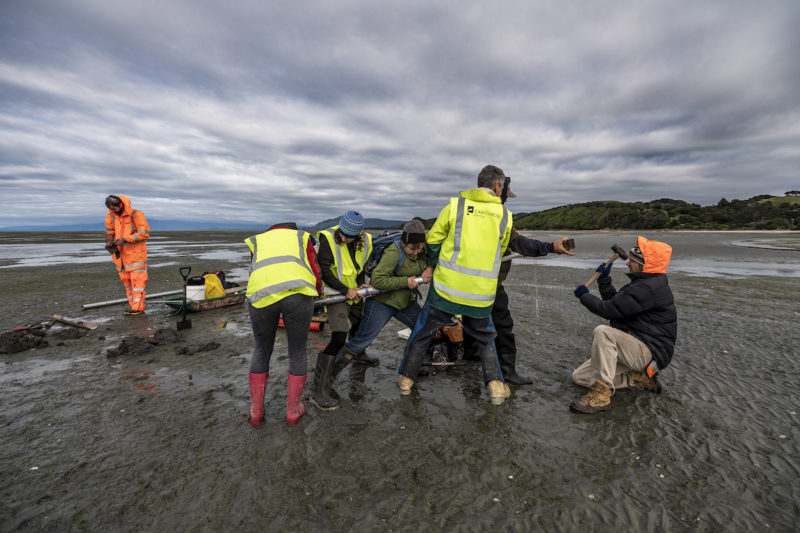
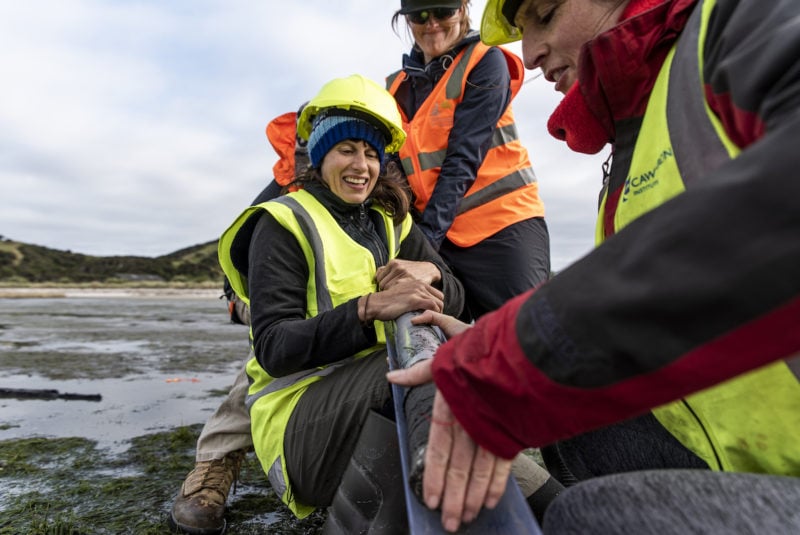
More than the sum of its parts
Next steps are unclear at this stage—there’ll be a hui in the New Year—but if you ask Lauren about the most powerful moments of the Onetahua experience for her, she’ll mention the magnificent sunrise at the start and a final gathering at the end before everyone went their separate ways.
“There was a karakia, where we just stood as a team, in a circle,” she says.
“The powerful thing about it was looking around that circle and seeing each individual and knowing that none of it could have happened without their contributions.”
Lauren Walker
Sometimes a project will create something greater than the sum of its parts. It always comes back to people and the connections that they make.
